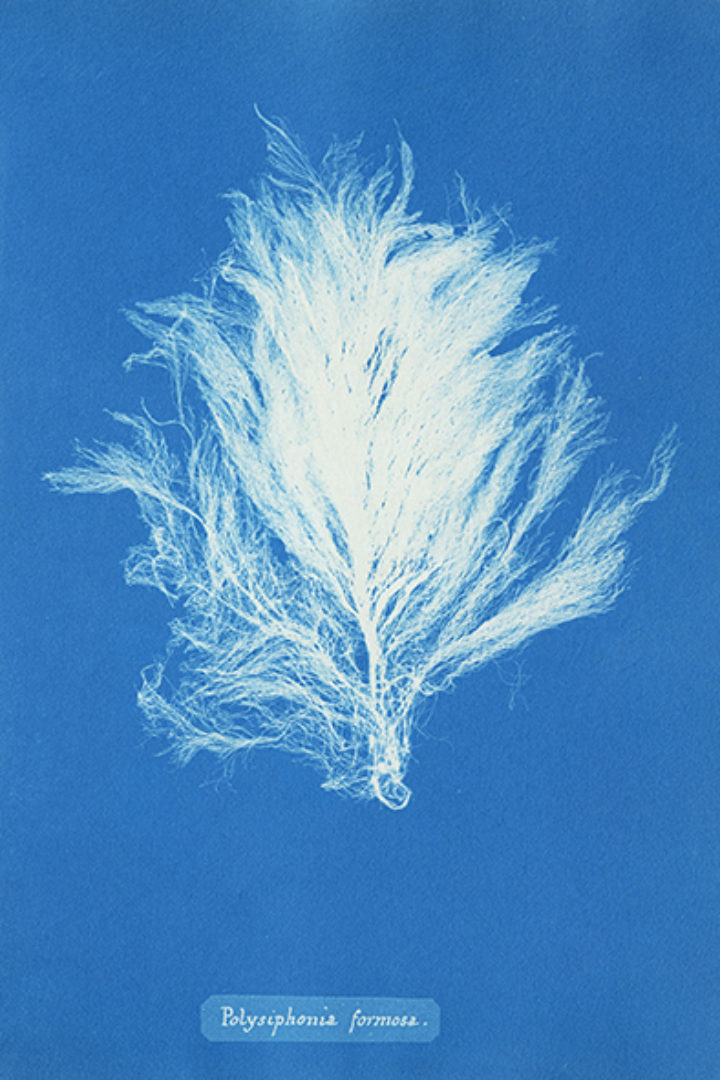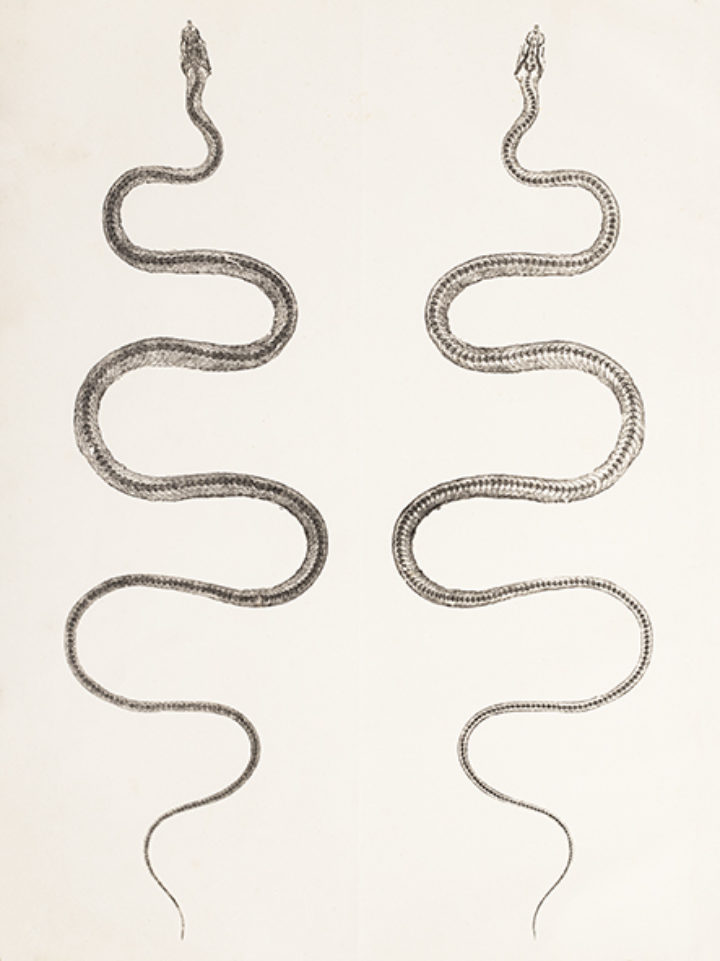Nature Printing
Nature printing, or the art of printing from pressed and inked specimens, can be traced back as far as the 15th century.

'Lloyd's Fern', Cecilia Glaisher, 'The British ferns, photographed from nature' (c.1855, FF 914.1/.2:582.35 GLA)
Cecilia Glaisher (1828–1892) is best known for her work 'The British ferns', a planned project to create photographic impressions of British ferns for a scholarly audience. However, for unknown reasons the project was abandoned. An initial tranche of 10 plates was produced and presented to the Linnean Society in 1855 by Edward Newman FLS (1801–1876), who was going to be Glaisher's publisher. According to the publisher's advertisement bound at the beginning of 'The British ferns': 'To each Plate will be appended, in Chronological Order, the name applied to the Species in Sir J. E. Smith's 'English Flora,' Hooker and Arnott's 'British Flora', Mr. Babington's 'Manual of British Botany', and Mr. Newman's 'History of British Ferns': so that it will be, in fact a companion and key to all our standard Botanical Works, as far as regards the Ferns.' This salt print of Lloyd's fern has been appended with the name Aspidium spinulosum (Hooker & Arnott), Lastrea cristata (Babington), and Lophodium uliginosum (Newman). Contrary to the preface in Moore & Bradbury's The ferns of Great Britain and Ireland, which dismisses traditional photography for representing ferns, the publisher's advertisement for the Glaisher photographs confidently states: 'The process of Photography is admirably adapted to making faithful copies of Botanical Specimens [...]: it possesses the advantage over all others hitherto employed of displaying, with incomparable exactness, the most minute characters...'

'Rhinolophus Hippocrepis Herm.', Alois Auer, [Naturselbstdruck] (1854)
Alois Auer (1813–1869) was the director of the Imperial Printing Office in Vienna. A printer, inventor and botanical illustrator, he published the first work on nature printing (in German, Naturselbstdruck, or 'nature self-print'). The Society holds this nature-printed greater horseshoe bat (current name: Rhinolophus ferrumequinum) and a fossil fish by Auer. He used soft lead to make an imprint from a natural object, and an electrotype was then used for the printing plate. The body of the bat must have been added by hand (see Cave & Wakeman, Typographia Naturalis, 1967). Henry Bradbury, whose Athyrium filix-foemina is also on display, used Auer's process to create his own prints.

'Spinifex squarrosus', Henry Smith, Specimens of nature printing from unprepared plants, P. 71 (1857, FF 582.4(084.1) SMI)
Shown here is a print of Spinifex squarrosus (current name: Spinifex littoreus), a species found in tropical and subtropical Asia, and Australia. It often forms large colonies and plays a stabilising role in sand dunes. This image is part of 100 plates nature printed by Henry Smith and self-published in 1857 in Madras. The Society's copy is annotated by a 'Dr Pearl'. Very little is known of Henry Smith.

'Fucus vesiculosus', Anna Atkins, Photographs of British algae: cyanotype impressions, Vol. 1, Pl. 120 (1843-1853, Q 582.26 (41/42) ATK)
Anna Atkins's (1799–1871) Photographs of British algae is considered the world's first book of photographs. With prominent scientist George Children as her father, Atkins was able to make her mark as a gifted scientific illustrator, producing engravings of shells and other subjects for her father's publications. However, her greatest achievement came with her early adoption of the 'cyanotype', a simple photographic process that uses a photosensitive chemical solution to produce an electric-blue print; as you can see here with this bladder wrack, the chemicals do not react where the specimen is placed, leaving this white impression of the species. Photographs of British algae is one of the most beautiful and sought-after scientific books of the 19th century.

'Polysiphonia formosa', Anna Atkins, Photographs of British algae: cyanotype impressions, Vol. 2, Pl. 18 (1843-1853, Q 582.26 (41/42) ATK)
This 'cyanotype impression' is found in Vol. 2 of Atkins's three-volume masterpiece. Here, her technique is able to capture the delicacy and complexity of the Polysiphonia formosa (current name: Polysiphonia stricta).

'Athyrium Filix-foemina', Henry Bradbury (artist), Thomas Moore, The ferns of Great Britain and Ireland, P. 30 (1855, FF 914.1/.2:582.35 MOO)
Thomas Moore FLS (1821–1887) and Henry Bradbury's (1831–1860) popular collection of nature-printed ferns probably owes much of its success to Victorian Pteridomania, or fern fever. Using a fairly new printing process developed at the Imperial Printing Office in Vienna under the Directorship of Alois Auer (see Bat above), the pair believed that this new method of nature printing was the way forward in displaying accuracy and detail in plants, particularly ferns. From John Lindley's preface of The ferns of Great Britain and Ireland: 'The draughtsman can do no more than delineate a part of what he sees; and [...] what he delineates will at all times be a matter of doubt [...] To express such facts with the necessary accuracy, the art of a Talbot or a Daguerre was insufficient, nor could they be represented pictorially until Nature-Printing was brought to its present state of perfection.' Sadly, credit was never given to Auer's origination of the process and the resulting dispute may have, in part, been a factor in Bradbury's suicide at 29.

'[Snake]', Henry Smith, Specimens of nature printing from unprepared plants, P. 100 (1857, FF 582.4(084.1) SMI)
This nature print shows one snake that has been printed by folding the paper over the specimen in order to display the top and underside of the snake. The print is from the same volume as the nature-printed Spinifex squarrosus shown above.
